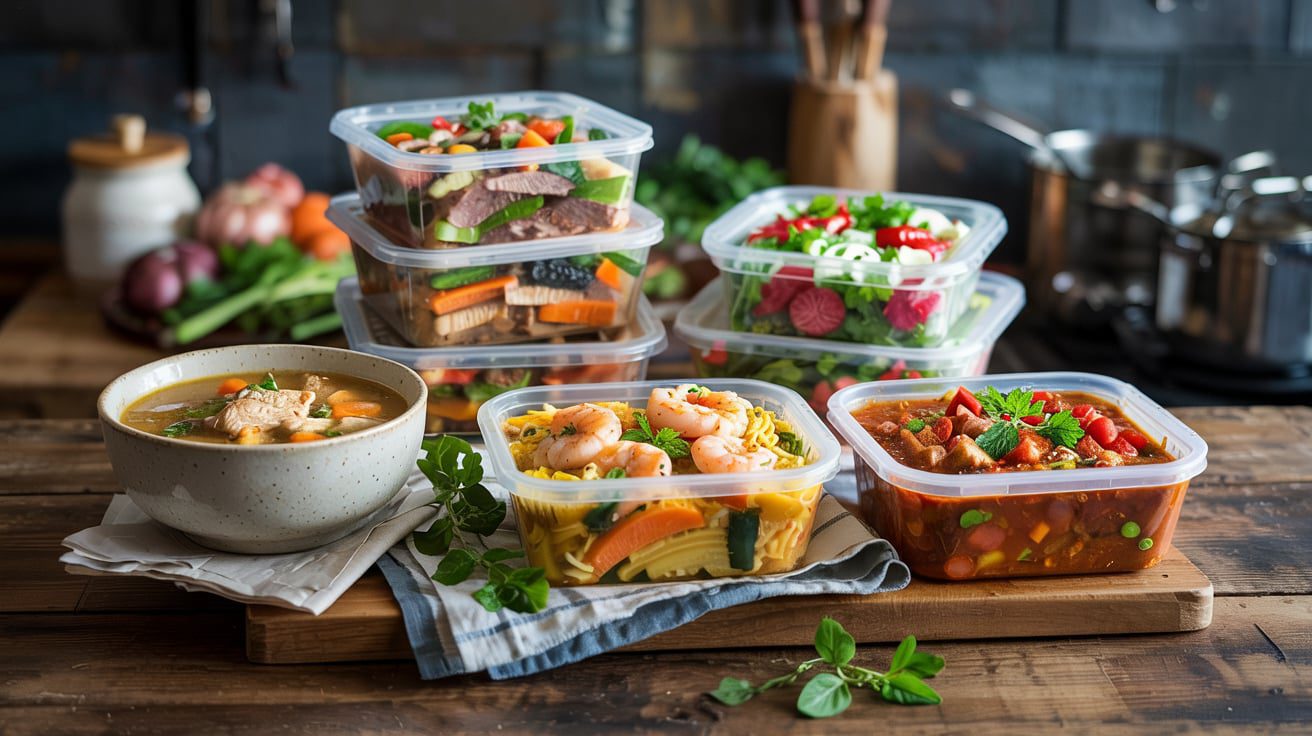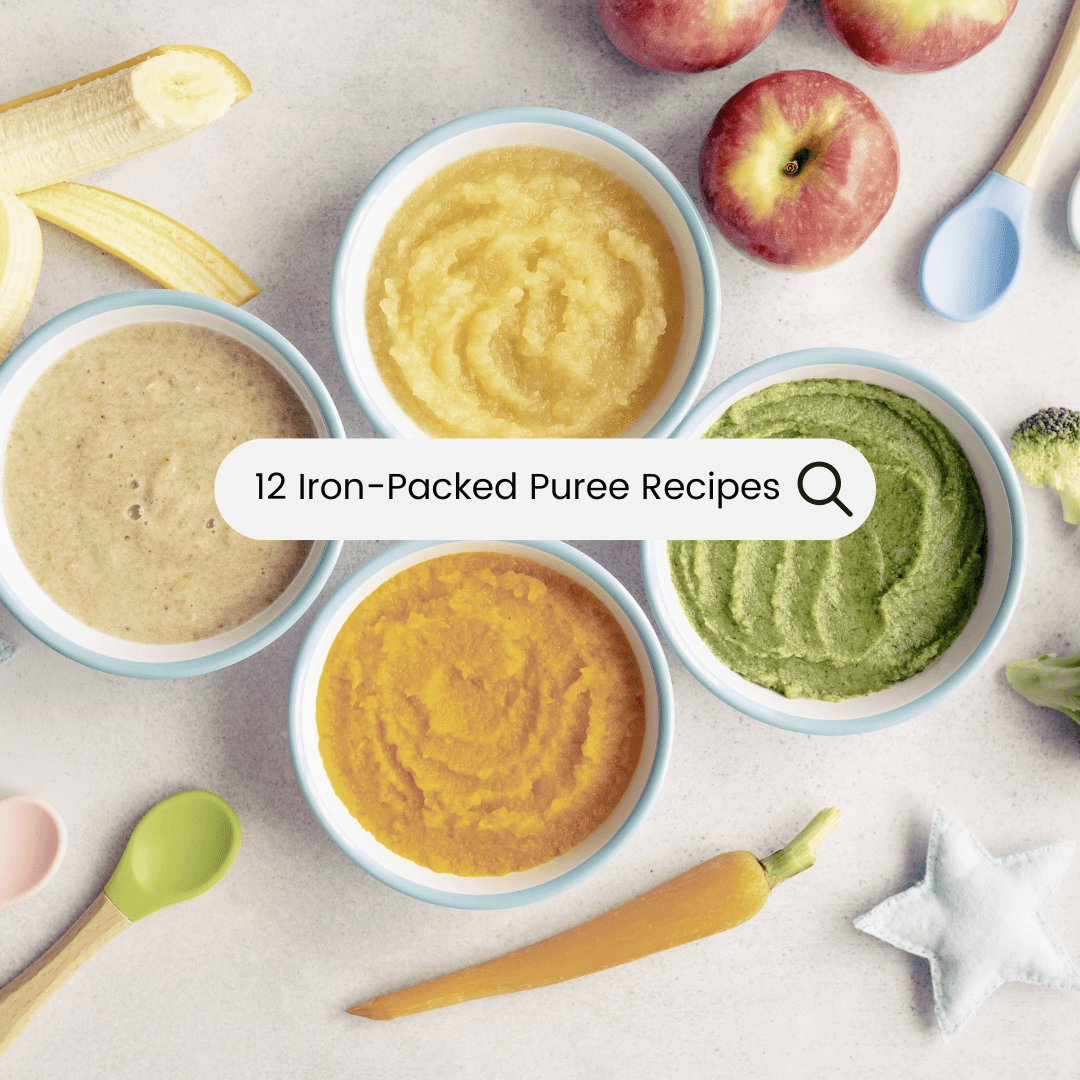
Introducing solid foods is an exciting milestone for babies and their parents. It’s important to ensure that these first foods are not only tasty but also Iron-packed with essential nutrients. Iron is a crucial nutrient that supports healthy development during these early stages.

This article explores a variety of iron-rich puree recipes designed to boost your baby’s nutrition. Providing diverse and nutritious options doesn’t have to be difficult. With the right ingredients and preparation, parents can easily give their baby the nutritious start they deserve.
1. Spinach and Lentil Puree
Spinach and lentils make a perfect combination for a nutrient-packed puree. Spinach is a well-known source of iron and provides important vitamins like A and C. Lentils, on the other hand, are rich in protein and fiber. Together, they offer a wonderful blend of nutrients critical for a baby’s development.
Preparing this puree is simple. Start by washing the spinach thoroughly. For the lentils, rinse them well and then simmer them until soft. In a separate pot, gently cook the spinach just until it wilts. This method helps preserve its bright green color and nutritional value.
Once both ingredients are cooked, blend them together until smooth. If the mixture is too thick, adding a little water or unsalted vegetable broth can help achieve the desired texture. The final puree should be smooth enough for young babies to swallow easily.
This puree offers a delicious way to introduce babies to the taste of vegetables. The combination of spinach and lentils ensures that they get plenty of iron and other essential nutrients. Make sure to serve it fresh and watch your baby enjoy a wholesome meal.
2. Quinoa and Apple Mash
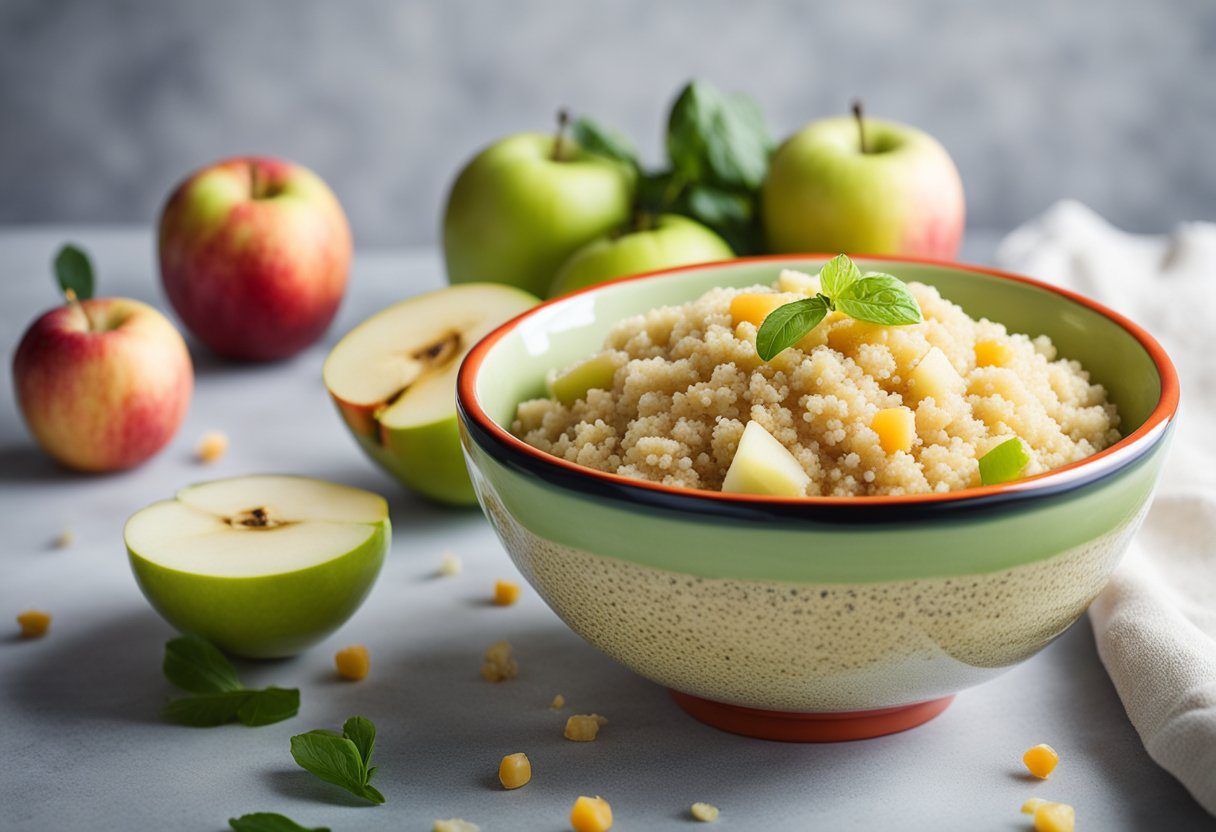
Quinoa and apple mash is an excellent choice for babies starting solid foods. Quinoa is a whole grain that offers a good amount of protein and iron. Combined with apples, it makes a nutritious and tasty meal for your little one.
To prepare, cook quinoa thoroughly and let it cool. Peel and chop apples, then steam them until tender. Blend the cooked quinoa and apples together to achieve a smooth texture. This mash can be stored in the fridge for a few days, making it convenient for busy parents.
This combination provides essential nutrients to support growth and development. Quinoa and apples are gentle on a baby’s stomach, making this puree a gentle option to introduce new textures and flavors. As babies explore this delicious mash, they enjoy a healthy and balanced meal.
3. Beef and Sweet Potato Blend
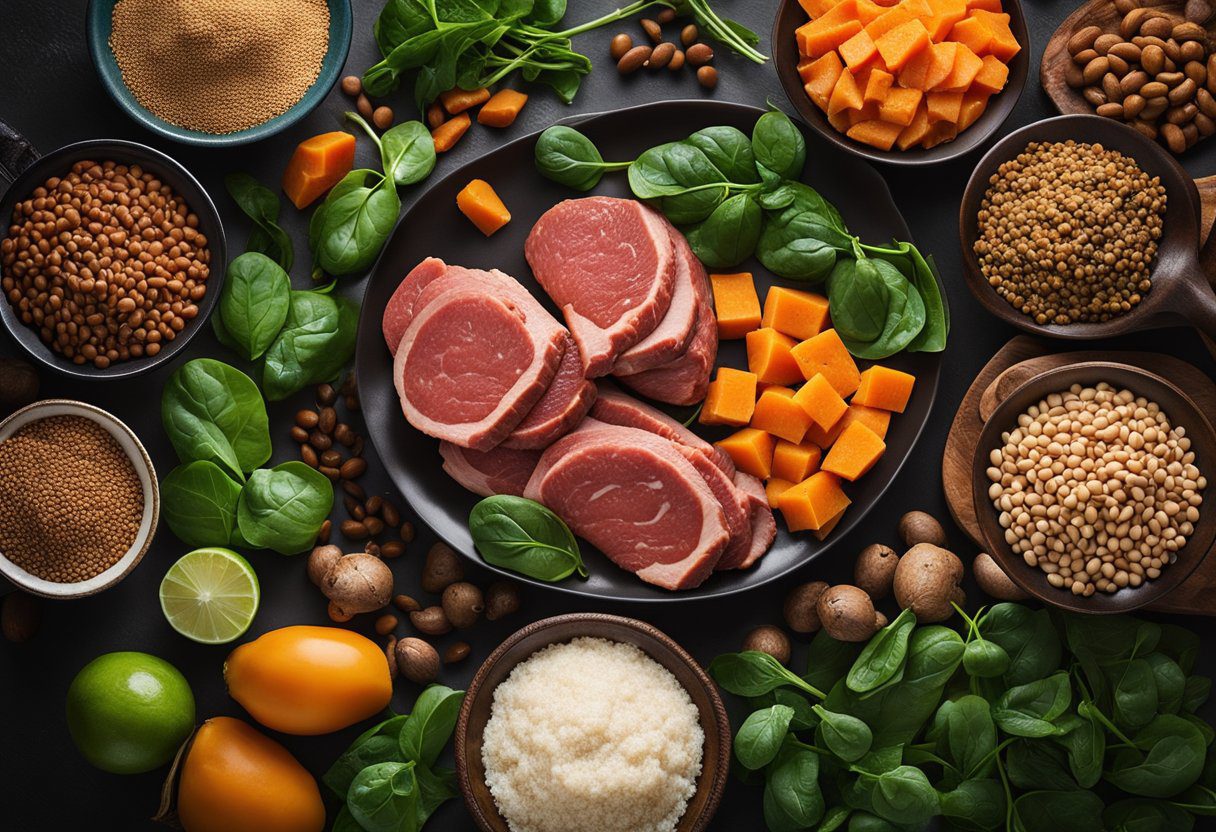
Beef and sweet potato make a great combination for babies starting solid foods. This blend is not only tasty but also full of important nutrients. Beef is an excellent source of iron, which helps in building strong blood cells. Sweet potatoes add vitamins like A and C, contributing to steady growth.
Preparing this purée is quite simple. Start by cooking lean ground beef until it is fully done. Boiled or steamed sweet potatoes should be soft to ensure easy blending. Mix them together to create a smooth, creamy texture that your baby will enjoy.
For an added twist, consider adding a touch of herbs like thyme, as suggested in the Beef + Sweet Potato Baby Food Puree. This can introduce your baby to new flavors and aromas at an early age, gently expanding their palate.
Offering this purée to your little one can support their nutritional needs, especially if they are following a diet full of iron-rich foods. By including beef and sweet potatoes, parents can provide a wholesome meal option that is both satisfying and nourishing.
4. Chicken and Broccoli Mix

This recipe combines chicken and broccoli, offering a nutritious meal packed with essential nutrients for babies. Chicken is an excellent source of protein and iron, which are vital for growth and development.
Broccoli adds to the mix by providing vitamin C and fiber. This vitamin helps in the absorption of iron, ensuring maximum benefits.
Preparing this puree is straightforward. Cook the chicken until it’s fully done, and steam the broccoli until soft. Blend them together to achieve a smooth consistency suitable for babies.
Adding a little water or low-sodium broth can help achieve the desired texture. This puree is not only nutritious but also introduces babies to savory flavors early in their food journey.
Incorporating this Chicken & Broccoli Purée into a baby’s diet can contribute to varied and balanced nutrition.
5. Chickpea and Carrot Puree
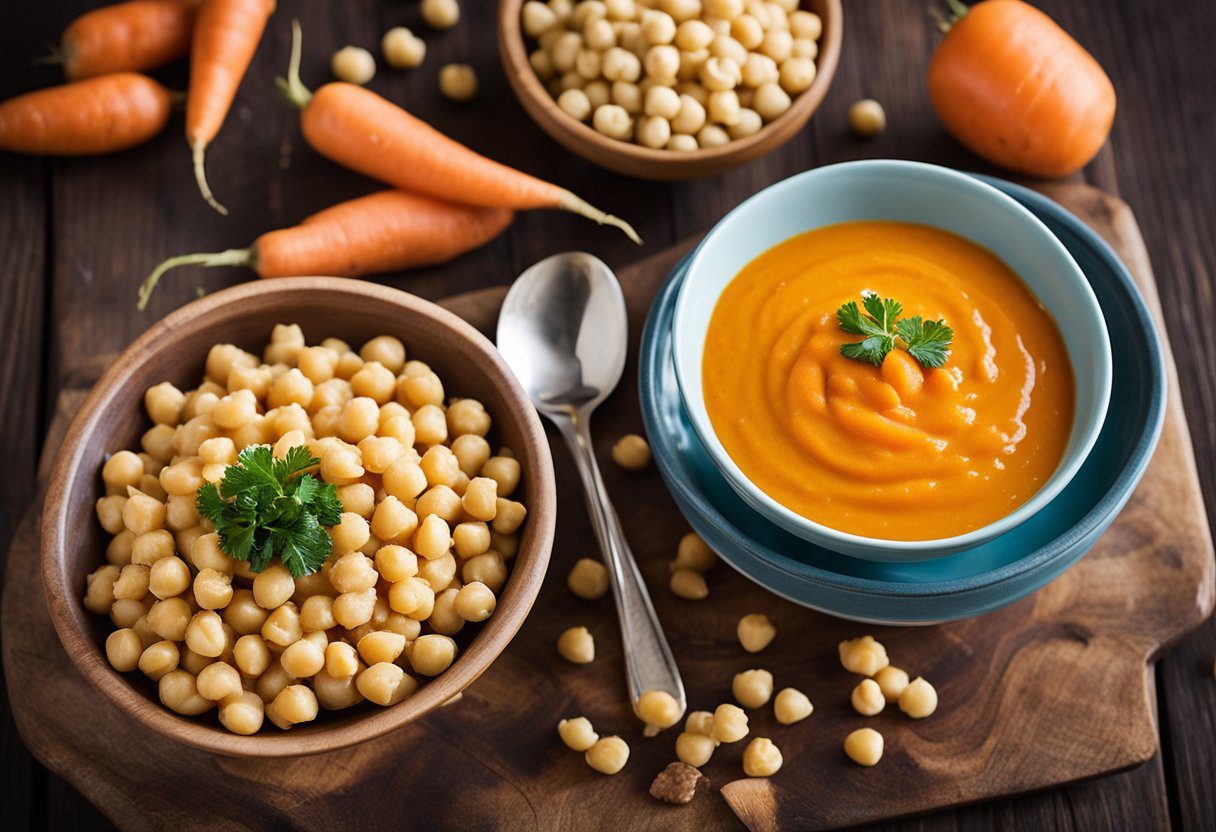
Chickpeas are a fantastic source of protein and iron for babies. They are easy to blend into smooth purees that little ones can enjoy. Carrots add a touch of sweetness and are rich in vitamins A and C. Together, they make a nutritious and delicious puree for your baby’s diet.
To prepare this puree, start by cooking chickpeas until they are soft. Fresh or canned chickpeas can be used, just make sure to rinse canned ones well. Boil or steam carrots until tender. Once both ingredients are ready, blend them in a food processor until smooth.
This puree can be served on its own or mixed with other fruits and vegetables for added flavor. For a variety of recipes using chickpeas, check here.
Be sure to allow it to cool before serving to your little one. This puree not only provides important nutrients but also introduces new textures and flavors. It’s a great way to support your baby’s growth and development through their early food experiences.
6. Lentil and Avocado Blend

Lentils are a great source of iron and other nutrients. They help support a baby’s growth and energy needs. Avocado adds creaminess and healthy fats, making this puree smooth and nutritious.
For this blend, cook the lentils until soft. Mash or blend them with ripe avocado. This mixture is gentle on tiny tummies and is full of important vitamins and minerals.
Parents can offer this puree to babies around six months old. It’s perfect for those starting on solid foods. Introducing flavors like lentils and avocados early can help widen a baby’s palate.
Including this puree in a baby’s diet is an easy way to boost their iron intake. Lentils are an excellent base for a variety of meals and snacks for little ones. Try different combinations for a varied diet.
This blend is also easy to store. Parents can freeze small portions for quick meals. This ensures a healthy, balanced option is always ready. Mixing up meal ideas keeps feeding time exciting for both babies and parents.
7. Quinoa and Banana Fusion

Quinoa is a nutritious grain that is perfect for babies. It is packed with protein and essential nutrients. When combined with bananas, it creates a tasty and healthy puree. Bananas add natural sweetness and are rich in vitamins like potassium.
Preparing this puree is simple. Start by cooking quinoa until it’s soft. Then, blend it with ripe bananas until smooth. The texture should be creamy, making it easy for babies to eat.
This combination not only provides energy but also helps in brain development. The nutrients in quinoa and bananas work together to support growth. This makes it an ideal choice for parents looking to introduce solid foods. Offering this puree is a great way to ensure that your baby gets a balanced meal.
8. Pumpkin and Beef Puree
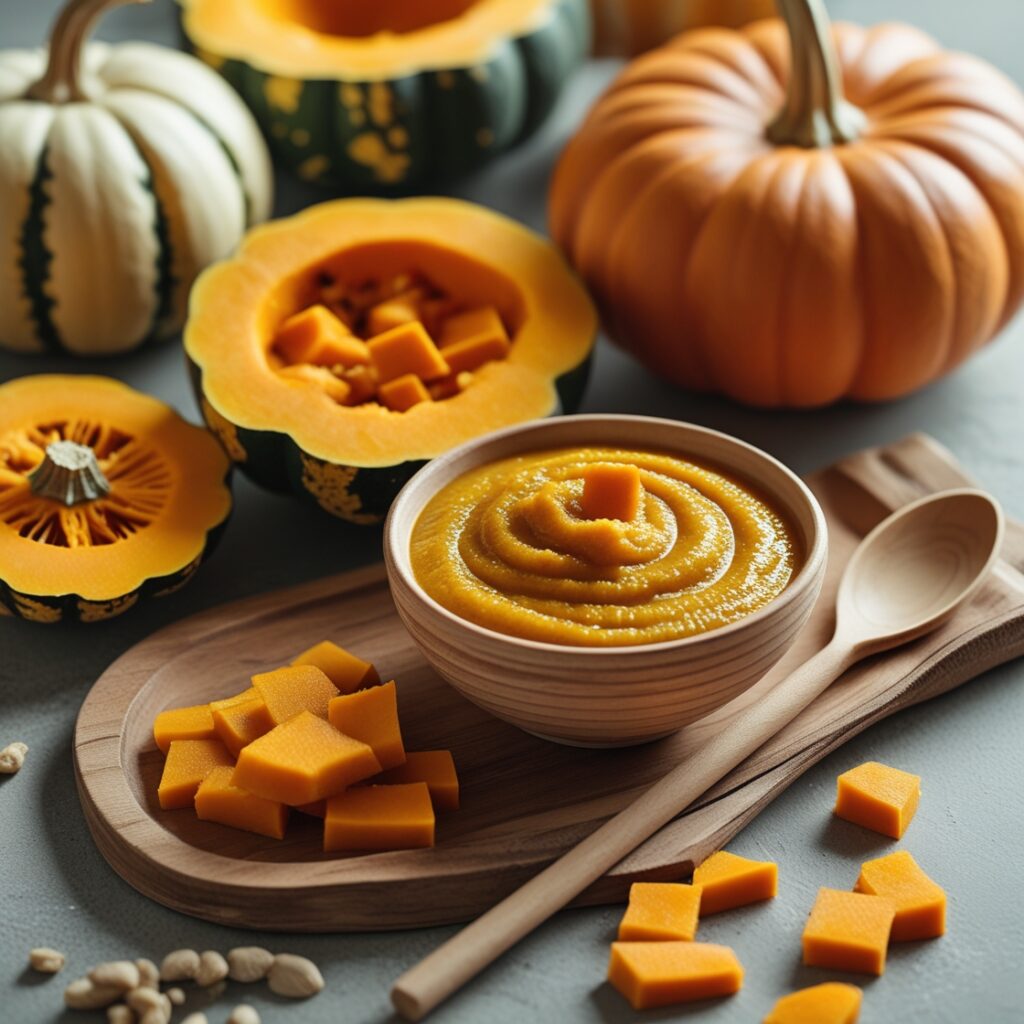
Pumpkin and beef puree is a nutritious blend perfect for babies starting on solids. Pumpkin offers a smooth texture and is packed with vitamins A and C. These nutrients help support a growing baby’s vision and immune system.
Beef is an excellent source of iron and protein, essential for developing strength and brain function. Combining beef with pumpkin provides a tasty mix, making sure the baby gets needed nutrients in each bite.
Preparing this puree is simple. Cook and blend pumpkin until smooth, then cook lean beef separately. Blend beef until it reaches a smooth consistency. Mix the two purees thoroughly to create a homogenous texture. This combo not only introduces different flavors but also helps in boosting the baby’s iron stores effectively.
Be sure the puree has no lumps and is the right consistency for easy swallowing. Serving this mixture regularly can introduce your baby to new tastes while supporting their dietary needs. This makes pumpkin and beef puree a great choice for a balanced diet.
9. Tofu and Pea Mash

Tofu and peas make a perfect combination for a nutritious puree that is rich in iron. This mash is not only tasty but also easy to prepare. Tofu provides plant-based protein and is an excellent source of iron.
Peas add a sweet flavor and are packed with vitamins and minerals. They are also rich in fiber, which promotes healthy digestion in babies.
To make this puree, blend soft tofu with steamed peas until smooth. This mix can be introduced to babies who are starting their journey with solid foods.
The recipe offers a delightful texture and flavor that babies enjoy. It’s a great option for parents looking to incorporate iron-rich plant foods into their child’s diet.
For more ideas, check out these iron-rich tofu recipes for babies that include fun ways to serve tofu.
10. Kale and Quinoa Medley
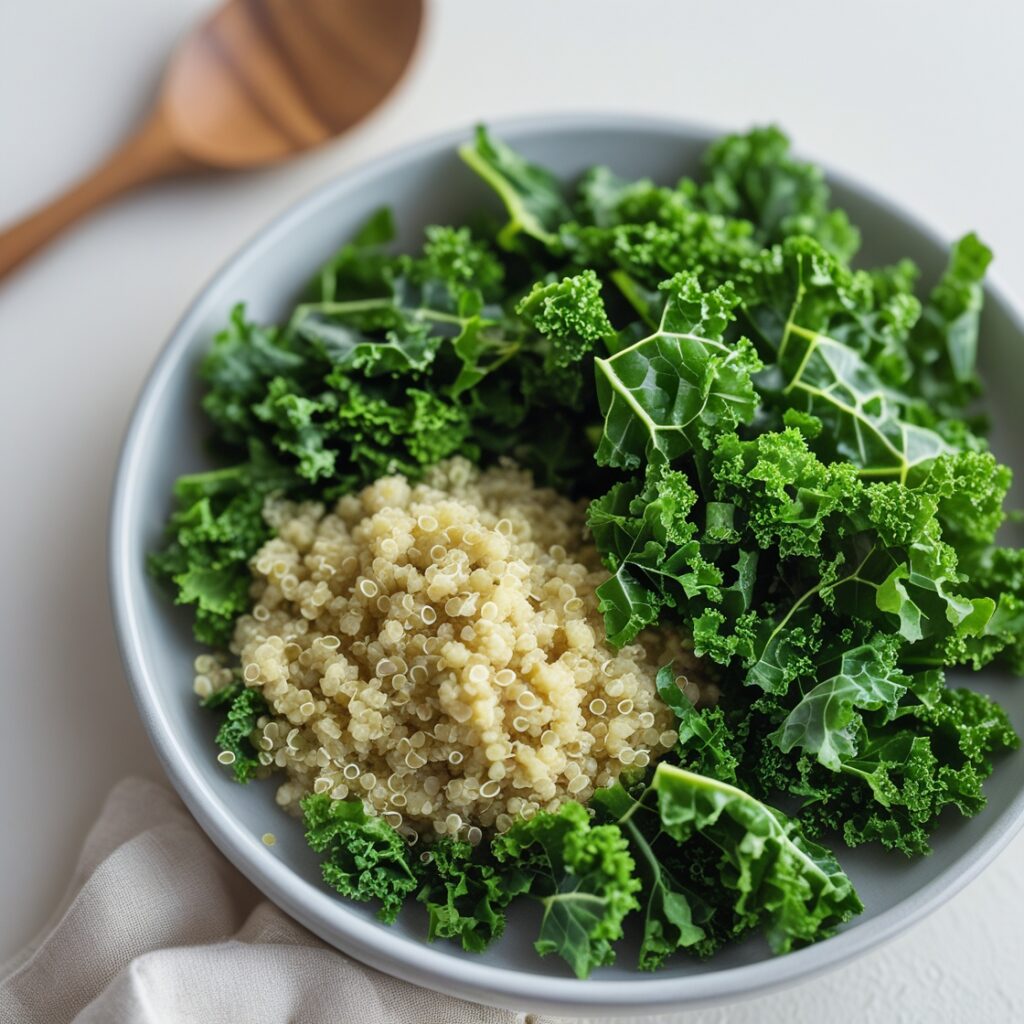
Kale and quinoa are excellent sources of iron, making them great ingredients for your baby’s diet. This combination provides not only iron but also plenty of other nutrients like vitamins and fiber. Starting solids with such nutrient-dense foods helps support a baby’s growth and development.
The medley is simple to prepare. Start by cooking quinoa in water until it’s fluffy. In a separate pan, sauté minced garlic in a bit of vegetable oil, then add chopped kale. Cook until the kale is tender, allowing the flavors to blend.
Mix the cooked quinoa and kale together. A touch of lemon juice can enhance the taste. This dish is not only healthy but also flavorful for little ones. Proper seasoning is key but keep it minimal for babies.
For more creative ideas and variations, consider checking out this Kale and Quinoa Medley recipe for inspiration on how to make this dish suitable for kids.
11. Carrot and Spinach Blend
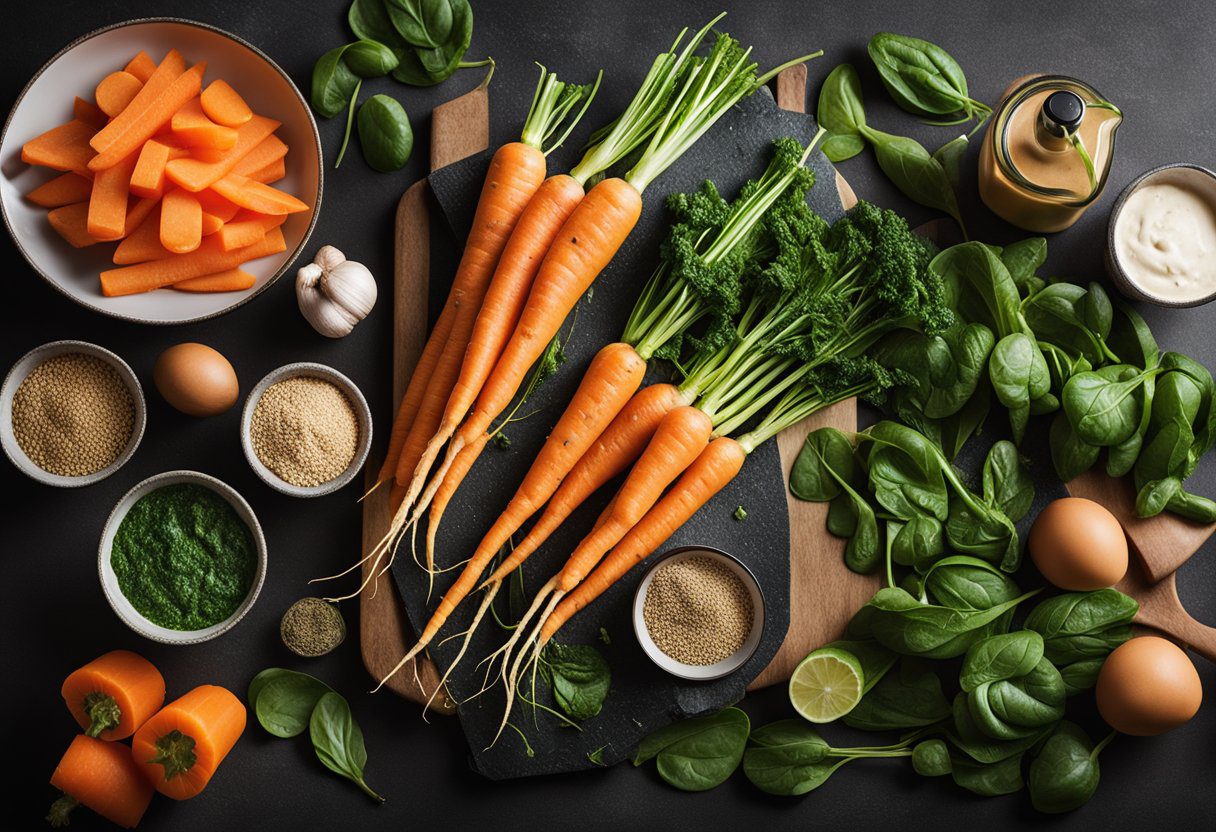
Carrot and spinach are both excellent choices for a baby’s diet. Carrots are loaded with vitamin A, which is important for eye health. Spinach is dense with iron and other essential nutrients.
To make the puree, start by washing, peeling, and chopping carrots into small pieces. Steam them until they are soft.
Meanwhile, rinse the spinach thoroughly to remove any dirt. Cook it briefly with the carrots for a few minutes until it wilts. This helps to retain its nutrients and makes it easier for babies to digest.
Blend the cooked carrots and spinach until smooth. You can add a bit of water or breast milk if needed for a smoother texture.
This carrot and spinach blend is not only nutritious but also naturally sweet, making it appealing to babies. Introduce this puree gradually to monitor your baby’s reaction and ensure they enjoy the flavor.
For more on this puree recipe, you can visit FirstCry Parenting. This iron-rich blend is a simple and effective way to contribute to your baby’s healthy development.
12. Liver and Apple Delight
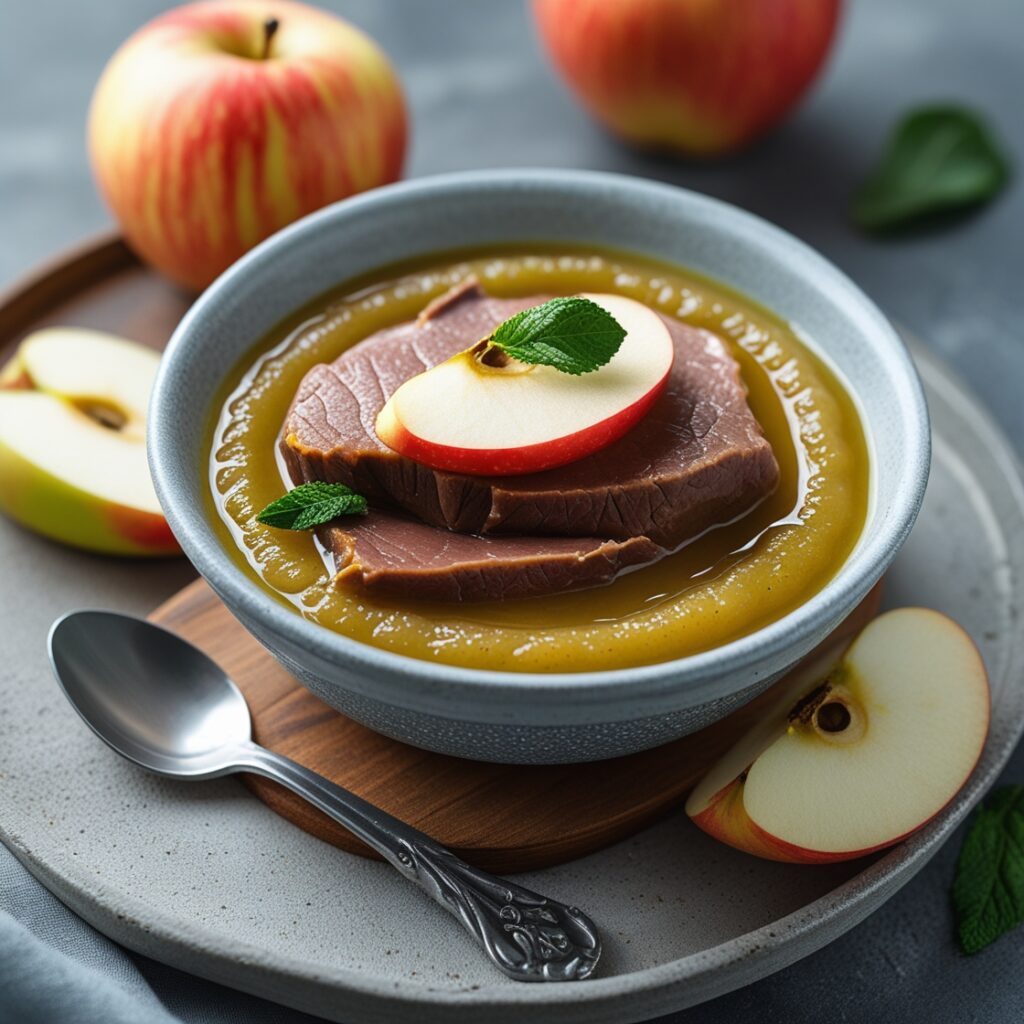
Liver is an excellent source of iron that can help boost a baby’s development. Combining it with apples makes the dish more appealing and adds a natural sweetness. This puree not only offers essential nutrients but also introduces babies to new flavors.
To prepare, start by selecting fresh liver. Chicken liver works well because it has a milder taste compared to beef liver. Wash the liver thoroughly and remove any connective tissues to ensure a smooth texture.
Next, peel and core a sweet apple like Fuji or Gala. Cut the apple into small pieces for easy cooking. Cook the apple and liver pieces together in a pan with a little water until both ingredients are tender and fully cooked.
Once cooked, transfer them to a blender. Blend the liver and apple to a smooth puree, adding water as needed to achieve the desired consistency. This puree can be stored in an airtight container in the refrigerator for a few days.
This Liver and Apple Delight offers a nutritious meal idea for caregivers looking to incorporate nutrient-dense foods into their baby’s diet. For more ideas on iron-rich foods for baby-led weaning, visit nutrition2nourishflourish.com.
Understanding the Importance of Iron for Babies
Iron plays a crucial role in a baby’s growth and development. A baby’s iron levels can significantly affect their physical and cognitive development. Ensuring adequate iron intake supports their overall growth and helps prevent deficiencies.
Benefits of Iron in Early Development
Iron is essential for making hemoglobin, the protein in red blood cells that carries oxygen throughout the body. Without enough iron, babies may develop anemia, which can lead to fatigue and delayed development.
Iron also supports brain development. It helps in forming the myelin sheath, which speeds up the communication between neurons. Babies with adequate iron levels tend to develop cognitive and motor skills more effectively.
In addition, iron contributes to a healthy immune system. A strong immune response helps babies fight off infections and stay healthy, ensuring they have the energy and vitality for learning and play.
Recommended Daily Iron Intake for Infants
The amount of iron an infant needs depends on their age. From birth to 6 months, babies typically get sufficient iron from breast milk or formula. At around 6 months, their natural iron stores begin to diminish, and additional sources become essential.
For infants 7 to 12 months old, the recommended daily intake is about 11 milligrams of iron. Providing iron-rich foods, like purees made from fortified cereals, meats, or legumes, can help meet these needs. Pairing iron-rich foods with a source of vitamin C can enhance absorption, making it even more essential to carefully plan their meals.
Tips for Introducing Iron-Rich Foods
Introducing iron-rich foods to a baby is an essential step in their development. It ensures they get the nutrients needed for growth while minimizing potential risks. The following sections provide key details on how to determine when your baby is ready and ways to ensure they receive the right balance of nutrition.
Signs Your Baby Is Ready for Solids
Timing: Babies are usually ready to start solid foods around 6 months of age. Look for cues like sitting up with minimal support and showing interest in food. If a baby can hold their head steady, it’s typically a good sign they might be ready.
Interest in Food: Observing a baby’s interest is also important. They might watch others eat, reach for food, or open their mouth when offered a spoon. Such behaviors suggest a growing curiosity about food.
Loss of Tongue Thrust Reflex: This reflex helps babies suck and swallow but fades as they get older. If a baby stops pushing food out of their mouth with their tongue, it might be time to start solids.
It’s essential to ensure that your baby is developmentally prepared before introducing new textures and tastes.
Balancing Nutritional Needs
Variety is Key: Providing a range of iron-rich foods supports balanced nutrition. Foods like iron-fortified cereal, pureed meats, and legumes are good choices. Ensure that foods are appropriately pureed or mashed for a baby’s developmental stage.
Combine with Vitamin C: This vitamin helps the body absorb iron better. Including fruits and vegetables like sweet potatoes or strawberries in meals can enhance iron absorption.
Monitor Iron Intake: While ensuring sufficient iron intake is crucial, balance is vital as too much can cause health issues. Monitor portion sizes and frequency.
Fortified Foods: Options like iron-fortified cereals provide a reliable source of iron and are easy to incorporate into meals. These foods are beneficial in managing iron levels.

